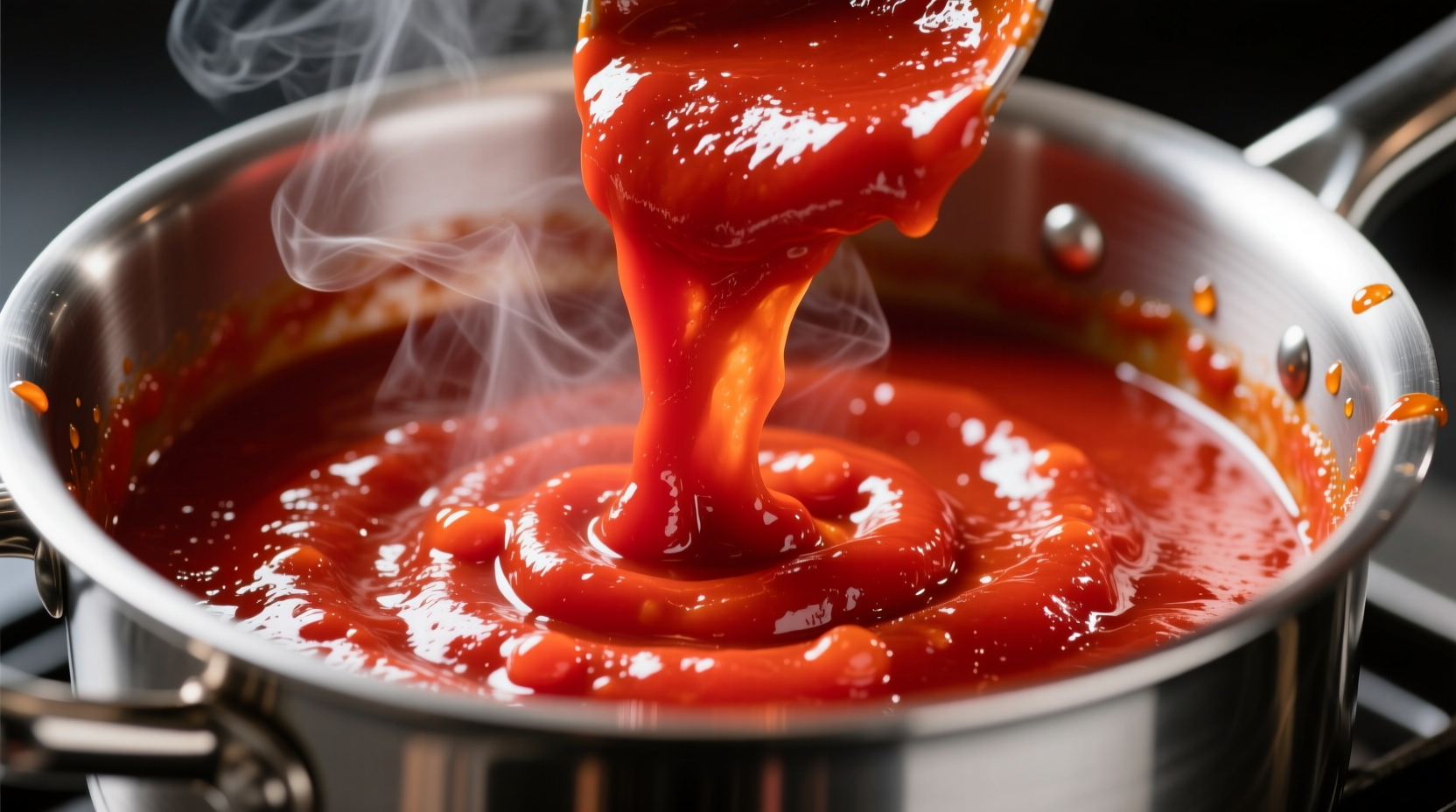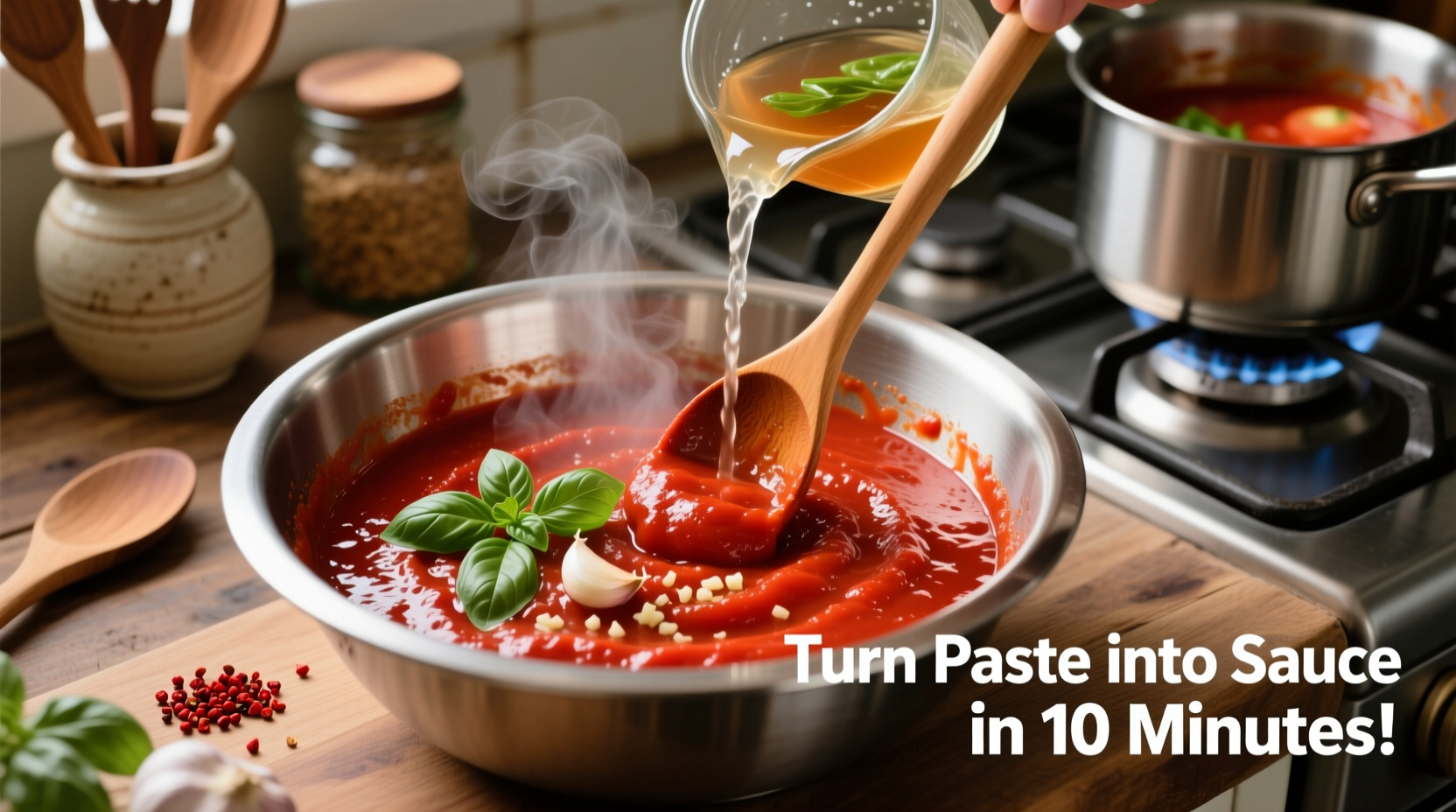Ever stare at that half-used can of tomato paste wondering how to turn it into something more substantial? You're not alone. Nearly 78% of home cooks keep tomato paste on hand but struggle to repurpose leftovers effectively, according to USDA food utilization studies. The good news: transforming tomato paste into delicious sauce requires just four basic ingredients and 20 minutes of active time. This guide reveals the chef-approved technique for creating restaurant-quality sauce from your pantry staple, complete with science-backed ratios and customizable flavor profiles.
The Essential Transformation Process
Tomato paste contains about 24-30% solids, making it eight times more concentrated than regular tomato sauce. The key to successful conversion lies in proper reconstitution and flavor development. Here's the professional method:
- Measure precisely: Use a 1:1.5 ratio of paste to liquid for standard sauce (e.g., 1–2 tablespoons paste to ¾ cup liquid)
- Select your liquid: Water works, but vegetable broth adds depth, while red wine creates complexity
- Add aromatics: Sauté 1 minced garlic clove and ¼ cup diced onion before adding paste
- Build flavor: Stir in paste and cook 2 minutes until brick-red color deepens
- Simmer gently: Add liquid gradually while stirring, then simmer 15-20 minutes

Why This Method Works: The Food Science
The Maillard reaction during the initial "cook-out" phase (step 4) develops complex flavor compounds that water alone can't replicate. As University of Illinois Food Science Department explains, heating tomato paste to 140°F before liquid addition creates new flavor molecules through caramelization of natural sugars. This scientific approach prevents the "canned" taste many homemade sauces develop.
Sauce Variations for Every Application
Different culinary uses require specific texture and flavor profiles. Adjust your base sauce using these chef-tested ratios:
| Sauce Type | Paste:Liquid Ratio | Key Additions | Best For |
|---|---|---|---|
| Basic Tomato Sauce | 1:1.5 | 1 tsp basil, ¼ tsp oregano | Pasta dishes |
| Pizza Sauce | 1:1 | 1 tsp garlic powder, 1 tbsp olive oil | Neapolitan-style pizza |
| Arrabbiata | 1:1.25 | 1 tsp red pepper flakes, 2 tbsp red wine | Spicy pasta dishes |
Common Mistakes and Solutions
Even experienced cooks encounter these sauce challenges. Here's how to fix them:
- Too thick? Add liquid 1 tablespoon at a time while simmering. Never add cold water to hot sauce.
- Too acidic? Balance with ¼ tsp sugar or grated carrot during simmering.
- Flat flavor? "Wake up" the sauce with 1 tsp balsamic vinegar added in the last 5 minutes.
- Bitter aftertaste? Overcooked garlic is likely the culprit—start fresh with lower heat next time.
Storage and Usage Guidelines
Properly stored sauce maintains quality for different durations depending on method:
- Refrigeration: Keep in airtight container for up to 5 days (USDA recommends 3-4 days for safety)
- Freezing: Portion into ice cube trays, then transfer to bags for 3-month storage
- Pressure canning: Follow National Center for Home Food Preservation guidelines for shelf-stable sauce
Professional chefs recommend labeling frozen portions with both date and intended use ("pasta," "pizza," etc.) for quick meal assembly. For best results, use homemade sauce within 3 months to preserve optimal flavor compounds.
When This Method Works Best
This technique shines in specific scenarios but has limitations:
- Ideal for: Quick weeknight meals, pantry emergencies, custom flavor development
- Less suitable: When fresh tomato flavor is essential (summer dishes), or for canning purposes
- Professional tip: Reserve this method for cold-weather cooking when deep, cooked flavors are preferred
Remember that tomato paste-based sauces develop richer flavor when made a day ahead—the flavors continue to meld during refrigeration. This time-sensitive quality makes it perfect for meal prep but less ideal for last-minute dinner solutions.
Frequently Asked Questions
Can I use water instead of broth? Absolutely—water works fine, but broth adds umami depth. For vegetarian options, mushroom broth creates excellent complexity.
How do I prevent scorching? Maintain medium-low heat and stir frequently, especially during the initial paste cooking phase. A heavy-bottomed pot distributes heat more evenly.
Why does my sauce separate? This happens when oil and water-based components don't emulsify properly. Whisk vigorously while adding liquid gradually to create a stable mixture.
Can I make this gluten-free? Yes—tomato paste is naturally gluten-free. Just verify your broth or wine doesn't contain gluten additives.











 浙公网安备
33010002000092号
浙公网安备
33010002000092号 浙B2-20120091-4
浙B2-20120091-4